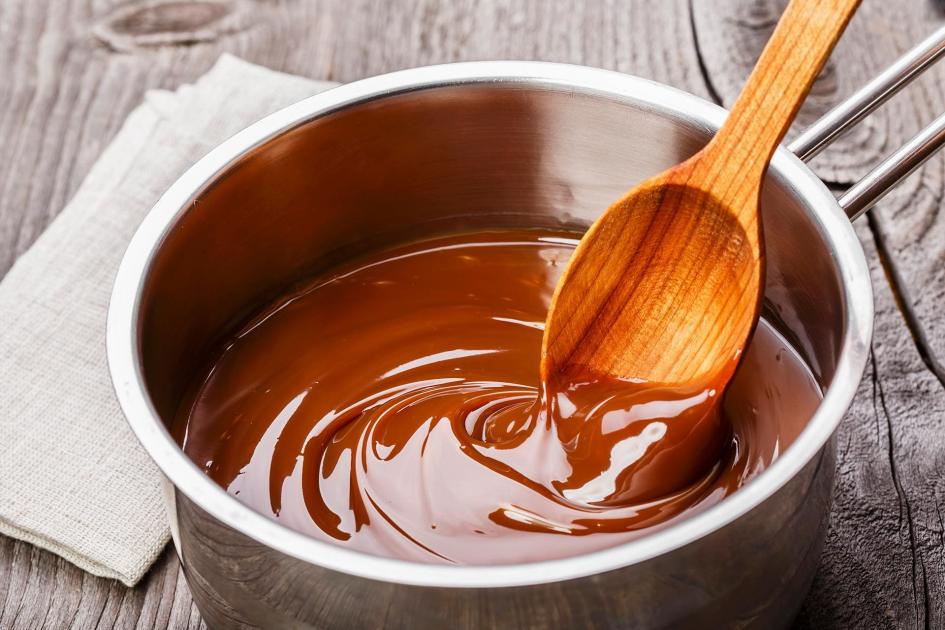Was the sauce you were preparing loose? Don’t worry, with imagination, resources and some patience you will get the right texture. In these cases, the most important thing is to select the appropriate thickener, because depending on the type of sauce there are many alternatives. To help you choose, we show you a range of infallible options that you should always have on hand. Without further ado, we invite you to discover how to thicken a sauce and become an expert in the kitchen.
How to thicken a sauce without flour?
If you want to thicken sauce without flour, you have a lot to choose from, however, a foolproof and very versatile method is to reduce the sauce to a simmer. In practice it is very simple, it only requires a little patience, but the results you will obtain will have been well worth the effort: a sauce with a powerful, silky and very aromatic flavor. The steps to follow are very simple:
- Cook the sauce over low to medium-low heat, without the lid on.
- Wait until it boils and starts to bubble. Stir from time to time, using a wooden spoon.
- Once the desired texture is reached, stir again but this time with a balloon stick. Then remove from heat.
Tip: The larger the container you cook the sauce in, the more it will reduce.
How to thicken a tomato sauce?
Tomato sauce is a classic among sauces, a faithful companion to pasta and an infallible resource for many other dishes. A good tomato sauce should have a thick but silky texture. If you want to thicken a tomato sauce in an exceptional way, there are several ways to achieve it:
- Reduce preparation. One of the most effective methods to thicken tomato sauce is to reduce the preparation, cooking it until its quantity is less. In the reduction, the flavor of the tomato sauce is concentrated, but it does not lose its original flavor.
- Add a vegetable puree. Apart from a more consistent texture, you will enrich the flavor and give your preparation a personal touch. Additionally, you will add nutrients to the recipe. For example, you can add carrot to achieve a slightly sweeter flavor (many Italian cooks use this vegetable to thicken). Other widely used products are eggplant, mushrooms, peppers, etc.
- Add some kind of flour or starch. Most people turn to cornstarch (cornstarch) or wheat flour for its efficiency as a thickener. You just have to previously dissolve the flour or starch in a glass of water, mixing well to avoid lumps. Add it to the sauce while it cooks.
- Use a chemical thickener. Chemical thickeners for sauces are a good option, since they do not change the original flavor of the sauce and fulfill their mission. A widely used thickener in gastronomy is xanthan gum. If you decide on a chemical thickener, you just need to follow the manufacturer’s instructions.
- Add tomato paste or tomato puree. What can be better than adding tomato concentrate? Add this thickener at the beginning or during cooking (it will work faster at this stage). This thickener goes perfectly with the reduction technique, because if you add tomato paste, you will speed up the process.
- Use cheese. Cheese is a very effective and fast thickener, it provides a creamier and more pleasant texture, but it changes the flavor (it is also very rich). Ideally, add one or two handfuls just at the end of cooking, so it melts properly. You must grate it or cut it into strips beforehand.
- Mashed potatoes. This thickener is very effective; it also helps the sauce yield and gives it a subtly sweet flavor. You simply need to prepare a puree of butter, milk or cream, and integrate it into your sauce.
But there is still more! If none of the above options suits you, don’t worry, there are many other ways to thicken your tomato sauce: by preparing Roux or Bearer Maine (both serve as a base for other sauces), adding a little of the water where the pasta is cooked (1 cup), using breadcrumbs (a handful), and heavy cream, meat (ground or sausage), among other ways.
How to thicken a sauce with cornstarch?
Cornstarch is the starch or cornstarch that is extracted for culinary uses. Although this flour is very versatile in the kitchen, it is better known as a thickener, since it is widely used to give consistency to creams, soups and sauces, as long as the latter are not very acidic.
There are pros and cons when it comes to using cornstarch to thicken a sauce. For example, using it can give your sauce a translucent color that not everyone likes. Also, you cannot cook it for a long time. However, it is one of the easiest and fastest thickeners to use; you just have to follow this recipe:
- Use 1 tsp. cornstarch for every 2 cups (500 ml) of sauce.
- Dissolve the cornstarch in 3-4 tsp. of cold or lukewarm-cold water (never lukewarm or hot).
- Stir the mixture very well, if not, there will be lumps. You can use a fork to make your job easier.
- Cook the sauce you want to thicken and wait until it boils.
- Add the diluted cornstarch just as the sauce starts to boil.
- Stir well until the mixture is integrated with the sauce.
- Reduce the fire to a minimum.
- The first bubbles will be the signal to remove the saucepan from the heat, the sauce has already thickened!
How to thicken a sauce with butter?
The method of adding butter or lard to sauces with the intention of giving them more consistency is known in the culinary world as montage (from the French monster). There are several ways to thicken sauces using butter, as some methods include other ingredients that, together, act as a thickener, such as Bearer Maine and Roux. When you thicken with butter, you not only give the sauce a more consistent texture, but you give it a very appetizing and professional velvety touch. Plus, you enrich the flavor of the recipe!
To learn how to thicken using just butter, follow these steps:
- Reduce the sauce. That is, let it boil for a few minutes until its quantity decreases.
- Add a small stick of butter (for 1-2 cups of sauce).
- Stir the butter until fully incorporated. Use a balloon stick. Once integrated, remove from heat and serve.
- Another way to incorporate the butter is to reduce the sauce and remove it from the heat. Then, the stick of butter is placed and mixed very well until it is integrated with the sauce.
Butter can be an excellent option to thicken sauces for meats. Learn about all the types of sauces for meat and chicken in our article.
Tip: This procedure also applies to broths, purees and soups.
How to thicken a sauce without flour or cornstarch?
If you do not want to use any type of flour or starch to thicken your sauces, do not worry, since there are many other infallible alternatives. The important thing is to select the most suitable one for you, evaluating which thickener is best suited to the sauce you are preparing, what your nutritional needs are (if you suffer from an allergy, intolerance or other type of condition) and evaluating which products are easier for you to use. Acquire.
That said, among so much variety, we selected the nuts, as they are excellent for thickening meats and sauces, and giving them an exquisite flavor. If you want to know how to thicken a sauce with nuts, pay attention:
- Grind the nuts very finely (can be cashews, hazelnuts, walnuts, peanuts or any other.). If you want to intensify their flavor, toast them a little before mashing them.
- Add the dried fruit flour to the mixture (one or two handfuls). Integrate it very well, until it is completely incorporated into the sauce. Do it using a balloon whisk.
- Stir from time to time until thick.
Although nuts are very efficient as thickeners, it is always convenient to know other alternatives. So, if you want to thicken a sauce without flour or cornstarch, you can also use:
- Vegetable or legume puree
- Eggs (boiled or raw yolk)
- Animal blood
- Viscera
- Agar (haute cuisine thickener for soups and broths)
- Coral
- Arrowroot
- Dairy (milk, cream or cheese)
- Fruits (apple, avocado, pear, mango and others)
- Chemical thickeners
- Breadcrumbs, crushed crackers or grated casaba (depends on the recipe)
- Boiled potato, mashed potato or flakes to prepare mashed potatoes
- Jelly
- Silken tofu
- The water where you cooked pasta is pasta sauce (because of the starch that the pasta releases).



